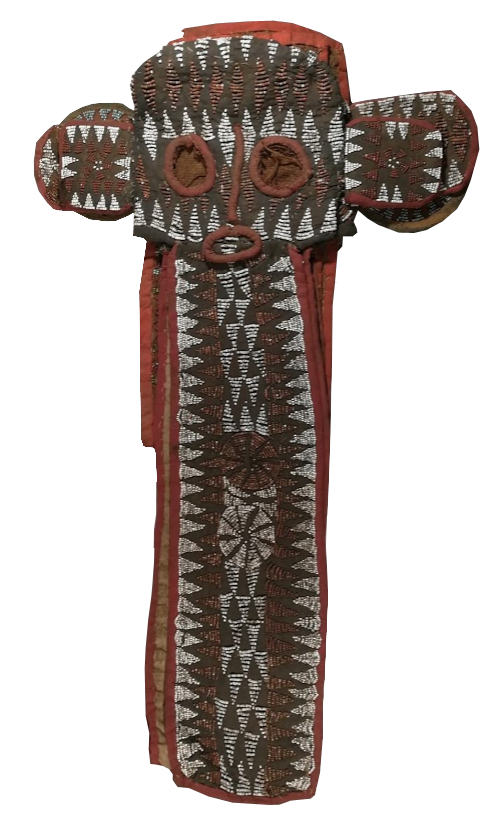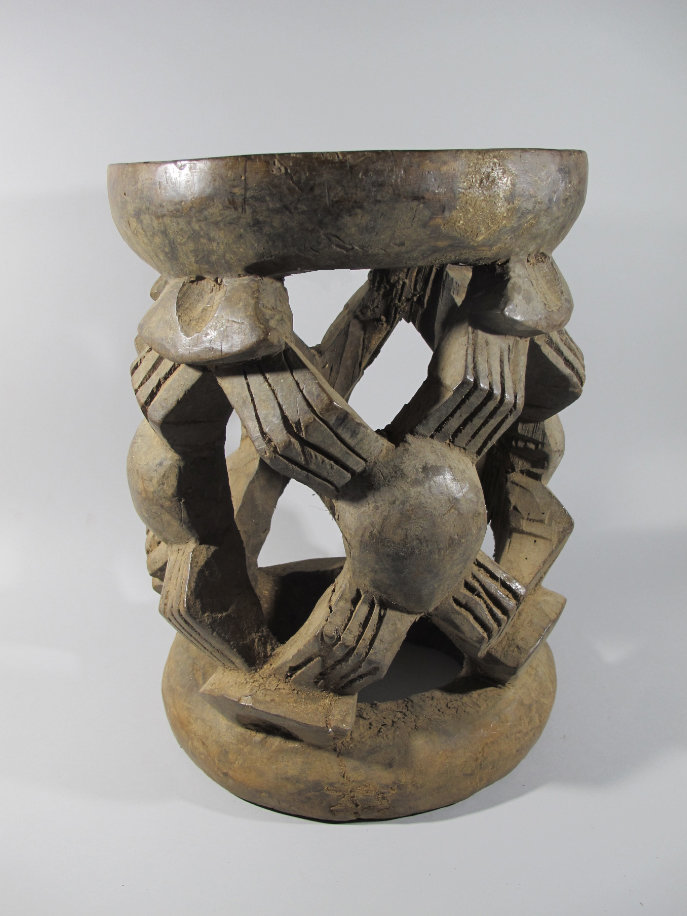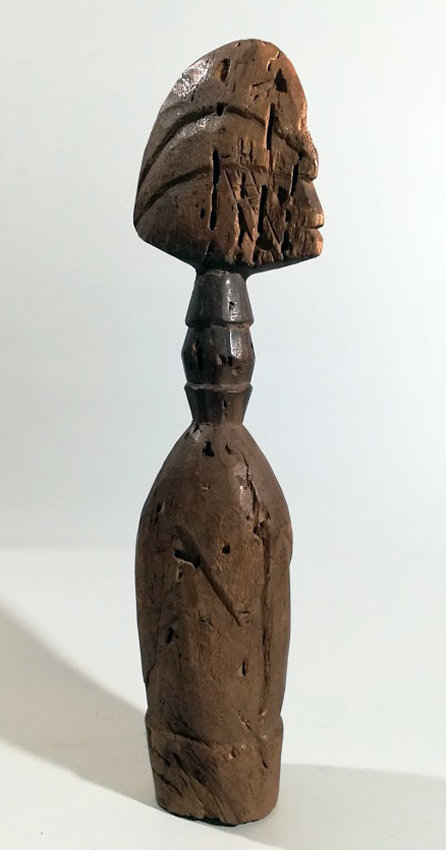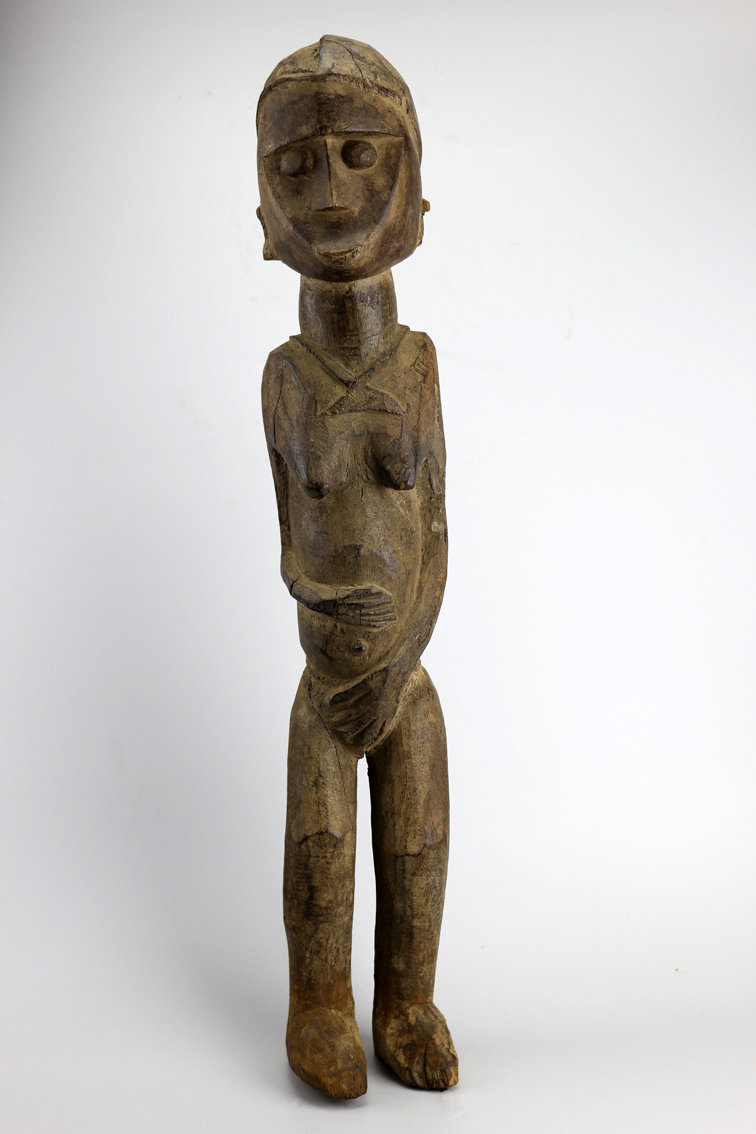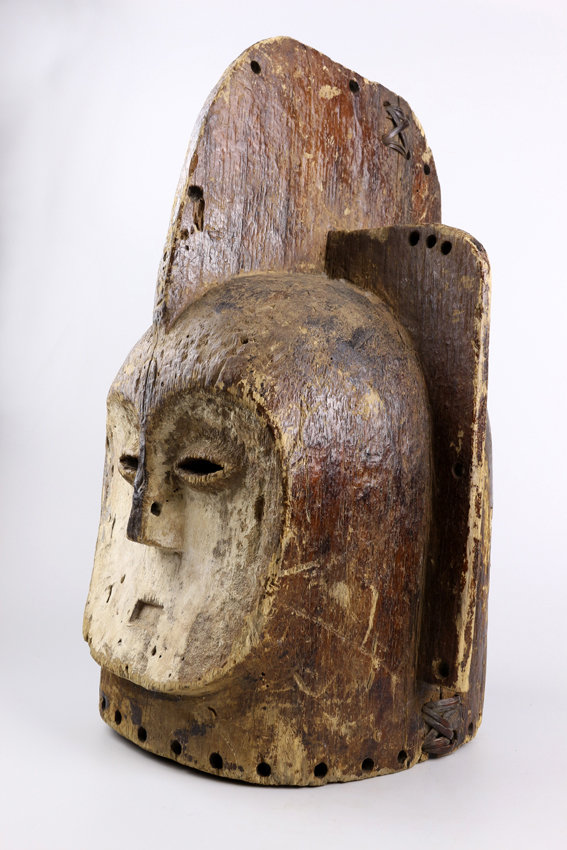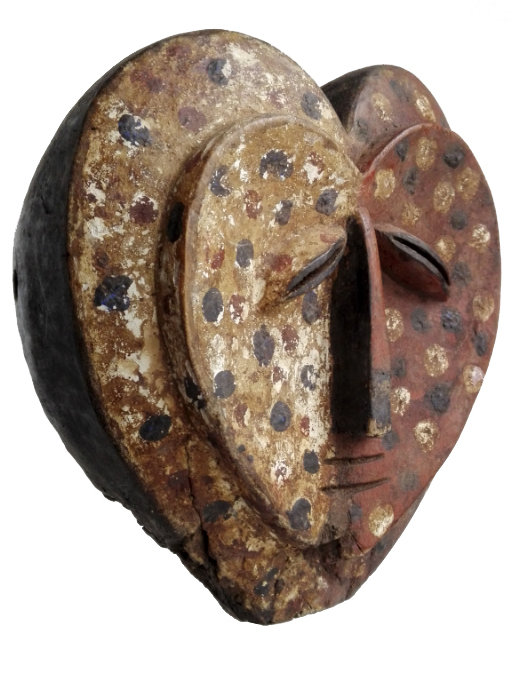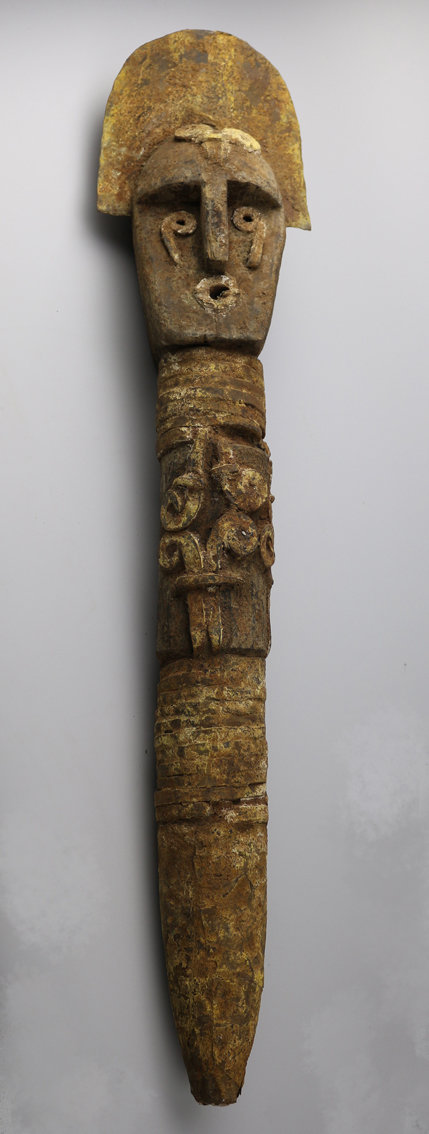Par qu’elles sont exceptionnelles, certaines pièces peuvent figurer dans un musée. Leur caractère exceptionnel peut avoir différente nature : une origine royale, une rareté, une beauté rayonnante, des proportions hors du commun ou bien encore un intérêt ethnologique particulier.
-
Quick View€2,100.00
The Bamileke are a people of Central Africa, coming from Cameroon (West region) in the Grassland region where the Bamoun, Tikar also live, close to them by their common ancestors, their neighboring social structures and their languages. .
The work of D. Toukam (“History and anthropology of the Bamileke people”, Paris, L’Harmattan, 2010 and 2016; …) conclude that the Bamileke would most likely come from the Baladis of ancient Egypt (natives of Upper -Egypt). In Egypt, the current Feelahins / Copts are largely recognized as Baladis converted by force, but still retaining huge parts of their ancestral culture. Departing from Upper Egypt in the 9th century AD, the Baladis-Bamileke arrived in the Tikar region in the 12th century. They were neighbors of the Tikar, but were never descendants of Tikar, contrary to popular belief.
The Bamilekes are, in spiritual matters, of great complexity The whole of their traditional religious organization is composed of initiation practices, meditations and rituals.
Their production of objects linked to their different cults has been very rich and some cults are still in progress today by exploiting ancient masks kept in certain chiefdoms or with certain notables or pieces called ” replacement “created to replace old worn, too damaged parts or because the use was limited in time.
-
Quick View€4,200.00
The Bamileke are a people of Central Africa, coming from Cameroon (West region) in the Grassland region where the Bamoun, Tikar also live, close to them by their common ancestors, their neighboring social structures and their languages. .
The work of D. Toukam (“History and anthropology of the Bamileke people”, Paris, L’Harmattan, 2010 and 2016; …) conclude that the Bamileke would most likely come from the Baladis of ancient Egypt (natives of Upper -Egypt). In Egypt, the current Feelahins / Copts are largely recognized as Baladis converted by force, but still retaining huge parts of their ancestral culture. Departing from Upper Egypt in the 9th century AD, the Baladis-Bamileke arrived in the Tikar region in the 12th century. They were neighbors of the Tikar, but were never descendants of Tikar, contrary to popular belief.
The Bamilekes are, in spiritual matters, of great complexity The whole of their traditional religious organization is composed of initiation practices, meditations and rituals.
Their production of objects linked to their different cults has been very rich and some cults are still in progress today by exploiting ancient masks kept in certain chiefdoms or with certain notables or pieces called ” replacement “created to replace old worn, too damaged parts or because the use was limited in time.
-
Quick View€3,100.00The Ashantis are a West African population living in Ghana. They are part of the great group of Akans (the whole Akan world also extends to Ivory Coast where it includes interior or coastal ethnic groups) and are themselves subdivided into numerous subgroups. The Ashanti federation developed in the 13th century. The capital is Kumasi. In the 19th century, this civilization reached its peak and occupied almost 70% of present-day Ghana. The Ashanti community was the largest of all Akan states and the longest in time. Core of the Oyoko clan, Asantemanso remains their place of origin.The Ashanti were conquerors who divided up into groups and lived in small groups which formed vassal city-states of the Denkyira kingdom. The Oyoko will become dominant and impose themselves. Osei Tutu will be the first king to unify these groups. The empire was first continental then the year 1806 marks the beginning of the conquest of the coastal region. The English eventually annex Ghana. It will be the end of the Ashanti Empire.
-
Quick View€5,500.00
Important Lobi statuette, Burkina Faso
The Lobi live in southwestern Burkina Faso and northern Côte d’Ivoire and Ghana. they are extremely resistant to any form of centralized political authority. Instead their communities are based on the laws of God. The central figure in each Lobi community is the religious specialist named the Thildar. this soothsayer is responsible for communicating with the spirits that govern the community and protecting members of each family from accidents, illness, violence and all the multiple threats people encounter in the hostile environment of West Africa . The carved Lobi represent the spirits of nature they called Thil. Each of these figures displays different gestures or postures, some of them can have two or even three heads, some female figures carry a baby under the arm. These unique characteristics represent the particular talent or power of the spiritual being they embody. A figure raising an arm places a roadblock at the entrance of the malicious spirits at the family home.
***
Important Lobi statuette, Burkina FasoThe Lobi live in southwestern Burkina Faso and northern Ivory Coast and Ghana. they are extremely resistant to any form of centralized political authority. Instead of their communities are based on the laws of God. The central figure in every Lobi community is the religious scholar named Thildar. this diviner is responsible for communicating with the spirits that govern the community and protecting the members of each family against accidents, illness, violence and all the multiple threats people encounter in the hostile environment of West Africa. The sculpted Lobi represent the spirits of nature they called Thil. Each of these figures displays different gestures or postures, some of them may have two or even three heads, some female figures carry a baby under the arm. These unique characteristics represent the particular talent or power of the spiritual being they embody. A character raising an arm places a checkpoint at the entrance of malicious spirits at the family home.
***
Wichtige Lobi Statuette, Burkina FasoDie Lobi leben im Südwesten von Burkina Faso und der nördlichen Elfenbeinküste und Ghana. Sie sind extrem resistent gegenüber jeder Form zentralisierter politischer Autorität. Statt ihrer Gemeinschaften basieren sie auf den Gesetzen Gottes. Die zentrale Figur in jeder Lobi-Gemeinschaft ist der Religionswissenschaftler Thildar. Dieser Wahrsager ist verantwortlich für die Kommunikation mit den Geistern, die die Gemeinschaft regieren und schützt die Mitglieder jeder Familie vor Unfällen, Krankheiten, Gewalt und all den vielfältigen Bedrohungen, denen Menschen in der feindseligen Umgebung Westaf. Die skoquerierten Lobi repräsentieren die Geister der Natur, die sie Thil nannten. Jede dieser Figuren zeigt verschiedene Gesten oder Haltungen, einige von ihnen können zwei oder sogar drei Köpfe haben, einige weibliche Figuren tragen ein Baby unter dem Arm. Diese einzigartigen Eigenschaften repräsentieren das besondere Talent oder die Kraft des spirituellen Wesens, das sie verkörpern. Ein Charakter, der einen Arm anhebt, platziert einen Kontrollpunkt am Eingang von bösartigen Geistern im Haus der Familie.
-
Quick View€8,500.00Masque heaume, à une seule face, taillée dans un bois très léger. Sur l’extrémité supérieure, est visible une crête.
-
Quick View€4,100.00Eastern Gabon. The region of Mékambo, in eastern Gabon, is populated by several groups which have developed over the past centuries all kinds of contacts: commercial, matrimonial, linguistic and cultural. They are the Kota-Mahongwe, the Bakota proper, the Bungom and the Kwele of the West. The transmission of plastic elements (shapes and decorations) took place within initiations, in particular that of mungala, reserved for young people. We note in this area the importance of the rituals linked to the notion of ngoye (literally, the “panther”), a vital principle that we seek to find in the impetants of satsi, the circumcision ceremony. Most of the masks in the region, from different communities, are thus decorated with the colors of the mythical fawn’s fur, with a red background, dotted with white and black eyespots. Other masks, often animal (“ekuk”), came to the Kota of Mékambo, from the Kwéle regions of neighboring North Congo. We find the horns of the antelope and a contrasting black and white decor, with the recognizable morphology of the eyes stretched into almond.Literature: “The native forests”, Musée du Quai Branly, 2017, p.117 – fig. 7.
-
Quick View€4,000.00
Ofo, Igbo, Nigeria
In a cult universe rich in an extraordinary quantity of objects, Ofos sculptures from Nigeria seem to be by far the most important. Presumably composed from simple fetish twigs from a sacred tree, the Ofos have thus evolved to become objects or masks with immediately identifiable forms for those who have seen them at least once. Thus their artistic form was it built from the use of wood and iron but it also adapted to the imagination of each sculptor, the expected use of the Ofo as well as its native territory . A head of heavy wood, a metallic aura gives a body without a limb a most mystical look for long Ofos as well as Ofos formalized by their only head.
The Ofo presented here comes in the form of a particularly thin and slender body compared to those that are more commonly encountered. It also has the rare characteristic of having a double face sculpted and decorated with metallic irons on both sides of the aura. It is thus “januiform”. A strong pigmentation visible on the entire sculpture suggests an intense use for this emblematic object of authority and power.
Literature: ” OFO Anam, Regards sur un statuary Igbo “, Alexandre Espenel and Rémy Houdart. Editions Rage, 2001.
